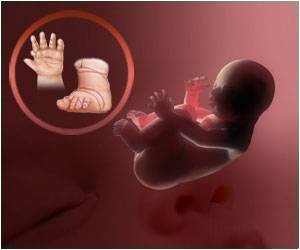Researchers have defined a previously unrecognized genetic cause for two types of birth defects found in newborn boys.
Lead author Dr. Dolores Lamb, director of the Center for Reproductive Medicine at Baylor, professor and vice chair for research of urology and molecular and cellular biology at Baylor, asid cryptorchidism and hypospadias are among the most common birth defects but the causes are usually unknown.
Cryptorchidism is characterized by the failure of descent of one or both testes into the scrotum during fetal development. In the adult man, the testes produce sperm and the male hormone, testosterone. Hypospadias is the abnormal placement of the opening of the urethra on the penis.
Both birth defects are usually surgically repaired during infancy.
Lamb and colleagues used a method of genome wide screening (essentially a molecular karyotype) called array comparative genomic hybridization to study children with these defects. The method looks specifically at changes in chromosomal regions that have undergone duplication or deletions too small to see under a microscope, termed copy number variations.
These genomic changes can alter gene dosage (gene gains or losses) resulting in a change in cell function.
In its analysis, the team showed that the cause of these birth defects in a subset of children with these defects of testis and penile development resulted from a change in the number of copies of a gene, VAMP7.
The role of VAMP7 gene duplication in causing these male birth defects was important because of the type of protein family it belongs to – it is a SNARE (Soluble N-ethylmaleimide-sensitive factor activating protein receptor) protein (a large protein superfamily consisting of more than 60 members in yeast and mammalian cell), Lamb said.
The report has been published in the journal Nature Medicine.
Source: yahoo news


